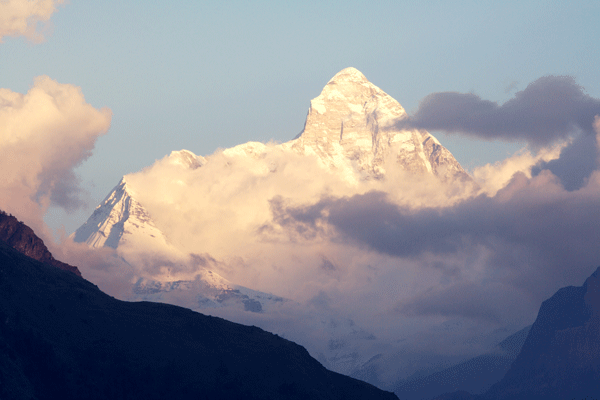Uttaranchal: Switzerland of India - Part 1
 |
| Nanda Devi |
Excerpts from Capt. M.S. Kohli’s book
The Survey of India, in its scientific division of the Himalaya, called this slice of territory the Kumaon Himalaya obviously because the Kumaon mountains predominated in the Surveyors elongated eye.
"The Kumaon Himalaya is bounded by the Sutlej on the West and North, and by the Kali [at Mahakali] on the east, which here forms the western boundary of the independent State of Nepal. In its passage through the Siwaliks at Tanakpur the Kali becomes the Sarda river of the Gangetic plain before joining the Gorgra in the old province of Uudh. Between them are the Himalayan basins of the Jamuna—with its source near Bandarpunch, and its right-bank affluent of the Tons; of the mountain feeders of the sacred Ganges—Bhagirathi, Mandakini, Alaknanda, and Pinder; and the small Ramganga, which drains the lesser Himalaya in the districts of Almora and Nainital.”
 |
| DevoPrayag, confluence of Alakanand & Bhagirathi rivers, forming greater Ganga |
"After six visits to the snows, I still believe that Uttarakhand is the most beautiful country of all high Asia. Neither the pristine immensity of the Karakoram, the aloof domination of Mt. Everest, the softer Caucasian beauties of the Hindukush, can compare wirh Uttarakhand. Mountains and valleys, forest and alp, birds and animals, butterflies and flowers, all combine to make a sum of delight unsurpassed elsewhere."
"Is there any region of the Himalaya, or even of the world which excel this region in beauty and grandeur! Where else are to be found such narrow and precipitous valleys and gorges, such serene vistas of alp, forest, snowfields and peaks? This ’Abode of Snow‘ is rightly the goal of the heat-enervated people or the plains. Never was there a Pilgrimage of finer accomplishments. It is the perfect antidote to a static life, and it cannot fail to inspire in the dullest a noble conception of the Universe”.
”The Gods who made this land must have been beauty drunk.”
 |
| Shivling, above Gaumukh, source of Ganga |
To be continued...



Comments
Post a Comment